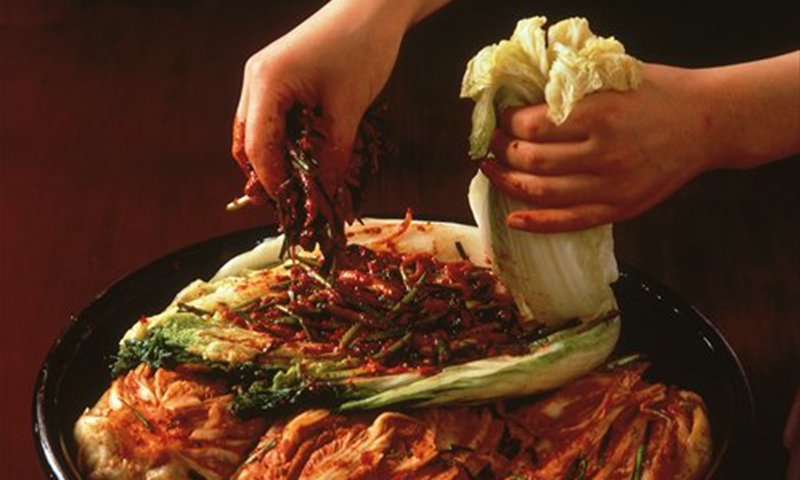
A person making kimchi Photo: CFP
China-produced kimchi, or paocai as the preserved cabbage garnish is called in Putonghua, has become a major support for South Korea after bad weather hit the cabbage crop there. The Global Times learned from multiple sources that exports of kimchi to South Korea have been high since the beginning of 2022 due to strong demand.
"The average export volume of China-produced kimchi to South Korea is about 10 standard containers a week," Li Qingxi, a cabbage supplier in Renzhao town of Pingdu city, East China's Shandong Province, said. The town has been crowned the "top kimchi town" as about 80 percent of the kimchi imported by South Korea is made there.
Li, who provides cabbage for local kimchi factories, noted that demand for kimchi has been high all year. "The export volume so far this year has seen a slight decrease from last year due to the pandemic and transport costs, but I'm positive about the future," he said.
The Washington Post reported on Friday that cabbage output in South Korea shrunk to two-thirds of normal due to bad weather, and the price has soared to $7.81 per head from an annual average of approximately $4.17.
South Korea's top kimchi producer Daesang announced that it will raise prices by 10 percent starting in October due to the cost rise, said the report.
Li said now is not the harvest time for the best cabbage for making kimchi, and local kimchi factories are using cabbage from neighboring Hebei Province in North China, priced at about 700 yuan ($97.78) per ton.
In December 2020, a China-led application to the International Organization for Standardization for paocai ignited a feud with protectors of kimchi culture on South Korean social media, who accused China of attempting to "steal the culture," which Chinese experts disagreed with, calling it an "unnecessary fuss."
Global Times




